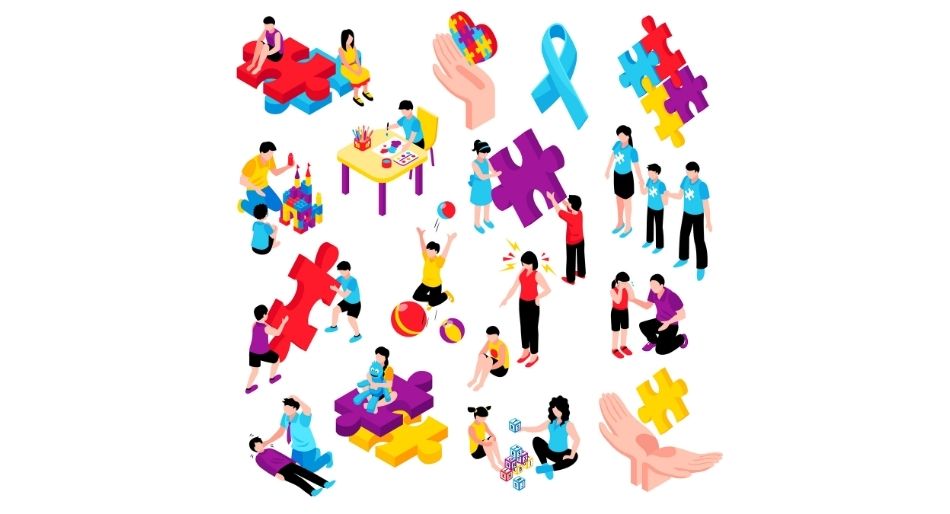
What are the different learning disabilities? What is the role of a special educator?

WHAT ARE THE DIFFERENT LEARNING DISABILITIES? WHAT IS THE ROLE OF A SPECIAL EDUCATOR?
While in school we have always come across that one classmate who had issues with his studies, who frequently scored low in academics, and was easily fooled by the other so called smart students in the class room. This classmate was always made fun of for being clumsy or for wrongly answering the simple questions asked by teachers. We remember the events of shabby notebooks being flung at this friend’s face by our teachers, we remember his parents standing tirelessly outside the principal’s office waiting to hear the same complaints about their dearly loved child. If any of those classmates are still in touch with us through social media, and whatever accomplishments they’ve had academically or professionally, then we need to be really happy for them and be proud of knowing them as they are the real heroes whose life was not as simple as any of ours, they struggled academically and have faced many challenges while growing up. Reaching the position that they have reached now was full of hardships, they may hardly remember any of this now as they thought it was NORMAL. We now know it WAS NOT!
Back in the 80s and 90s, the term learning disability (LD) wasn’t familiar with many. There were either bright students, average students, or dull students. Bright students were clubbed together and were privileged to sit in division A or B, average students sat in C or D, and then the dull ones who sat in E or F divisions. The bright ones were the star cast of the school, they were the ones whose names (and with them the school’s name) would appear in the newspapers and all the best school services were concentrated around them. What happened to the class of those dull students? Did they DROPOUT?
Thankfully a great deal of research, advancements in neurosciences, and the development of better screening methods have helped us gain better insights on the limitations faced by these students who are academically slow. They have no other physical or developmental impairment. We now know that learning disability is a real thing and with proper remedial intervention, these children can have a chance to fair education which is their right. We now have specialized teacher training courses which train special teachers who are called special educators.
LD may not necessarily happen due to any remarkable physical or neurological defect. Children with LD are identified at first mainly because of their observable inability to cope with their academic subjects. There is a vast difference between their actual achievement level and the expected level of achievement. Furthermore, this difference is not because of any marked intellectual disability nor do they lack in motivation, co-operation, or availability of good learning opportunities. There is no evidence to prove that LD is caused due to marked crippling emotional setbacks, however, a child with LD may experience deep psychological distress even under normal learning circumstances. There can be some gender differences in the prevalence of LD with boys being more affected than girls.
What is a Learning Disability after all? Let’s first look at the definitions as per the Diagnostic and Statistical Manual for Psychiatric Disorders (DSM 5).
There are three main types of specific learning disabilities, viz. dyslexia, dysgraphia and dyscalculia.
- DYSLEXIA: Dyslexia is derived from the Latin term where “dys” meaning difficult and “lexia” meaning words, thus we can say that It is an alternative term used to refer to a pattern of learning difficulties characterized by problems with accurate or fluent word recognition, poor decoding, and poor spelling abilities. Dyslexia also happens to be widely researched group of learning difficulties.
- DYSCALCULIA: Dyscalculia too is derived from the Latin term where “dys” means difficulty and “calculia” means related to mathematical calculations. Thus, a child with dyscalculia may show impairment in:
- Number sense
- Memorization of arithmetic facts
- Accurate or fluent calculations
- Accurate math reasoning
In addition to the above, children with dyscalculia may also experience the following difficulties:
- Direction and time difficulties
- Poor understanding of signs and symbols
- Difficulties in fractions and place values
- Difficulties in sequencing events
- Difficulty in pattern recognitions
- Write numbers as mirror images
- Difficulties in carrying and borrowing
Though all of the above is true, we also must take into account that a number of behavioral factors make it difficult to identify a genuine disability related to numbers and calculations. For example, exam anxiety, fear of mathematical problems, a natural hatred for the subject may also account for low grades in mathematics.
- DYSGRAPHIA: The term dysgraphia is derived from the Greek term where “dys” means impaired and “graphia” means written by hand. Thus dysgraphia is the term more associated with impairments which involve written sentences and comprehension. A child suffering from dyslexia or dyscalculia may also have dysgraphia when he/she consistently makes mistakes while writing. However, a lot of research is still underway as dysgraphia is poorly understood and least well researched. Children suffering from dysgraphia may have difficulty with
- Writing straight on the lines printed on their notebooks
- Understanding the line colors when writing on a three-line notebook
- May write alphabets as their mirror images, they may show confusion in small case letters like “b” and “d”, “p” and “q”
- Writing alphabets in another way round with common mistakes made while writing c, e, j, s, t, z, etc.
- Writing words in an overlapping pattern or leaving big gaps in between the alphabets of the same word are some of the common mistakes observed in children suffering from dysgraphia.
Let us now move on to discuss the role of a special educator in the intervention of children suffering from LD or having some difficulties in academic learning.
- A special educator always assesses the child referred to him/her as suffering from LD. He/she hears out the concerns of class teachers but always concludes diagnosis based on factual assessments conducted by his/her own self or an experienced psychologist.
- Through observations and standardized assessments, the special educators get to know the level at which the child is performing when compared with his/her peers. Once the child’s functional level is known, an Individualized Education Program(IEP) is carefully drafted. This program is then executed with the help from the school teachers and immediate caregivers,
- The IEPs are meticulously evaluated from time to time by inviting follow-ups and feed backs from the teachers, caregivers and the students themselves.
- In an inclusive set-up, a special educator gathers children suffering from LD and forms smaller groups which are not more than 5-7 students at a time. These students are preferably functioning at the same intellectual level.
- In these smaller groups, the focus is mainly on developing vocabulary skills, writing skills, enhancing their pencil grip, etc. The special educator imparts lessons in a fun and play way method which motivates the children to learn without being afraid of the teacher or without the threat of being mocked by the other fellow students, they are allowed to make mistakes in this remedial classroom.
- Special educators adopt a multi-sensory approach in their teaching and make use of many interactive teaching aids which are readily available within the school premises. They seldom rely on orthodox blackboard teaching methods.
- Special educators always develop a firm yet friendly rapport with their children with LD, their teaching methods are interesting and flexible to changes. They counsel the children to address any underlying emotional setbacks, guilt, anxiety or frustration building up due to noncompliance with the normal standards of education.
- Special educators ultimately aim at making the child an independent learner, they won’t let the child depend fully on the special teachers, they help the child get acquainted with the mainstream system of education and prepare these children to adjust with their peers.
- They also work upon modifying any undesirable behavior through many behavioral modification techniques, they reward the socially acceptable behavior with appropriate reinforcers and make efforts to ensure that the new learnt behavior sustains in the long run.
- Special educators never complain about the child’s shortcomings to his/her parents. They know the parents are already unhappy about the endless complaints given by the class teachers, more complaints only worsen the situation for the already distressed child. They suggest solutions and techniques so that the child adjusts better in the school system.
Thus, we can say that all the students can get equal learning opportunities when the schools’ resources are focused equally, if not more, upon special learning needs of children with disabilities. We don’t know if bright students will get brighter with added opportunities but dull students can definitely be saved from dropping out and falling through the gaps in the main stream education system. This will be “EDUCATION FOR ALL” in it’s true sense.
Also read,
Depression due to learning disabilities. Find the best child therapist or developmental therapist near you.
Help your child with a learning disability through remedial therapy.
https://mpowerminds.com/blog/Help-your-child-with-learning-disability-through-remedial-therapy
Image credits - Freepik

How Social Isolation Impacts Geriatric Mental Health? How to Reverse It?
Depression vs Dementia: How to Tell the Difference in Older Adults

